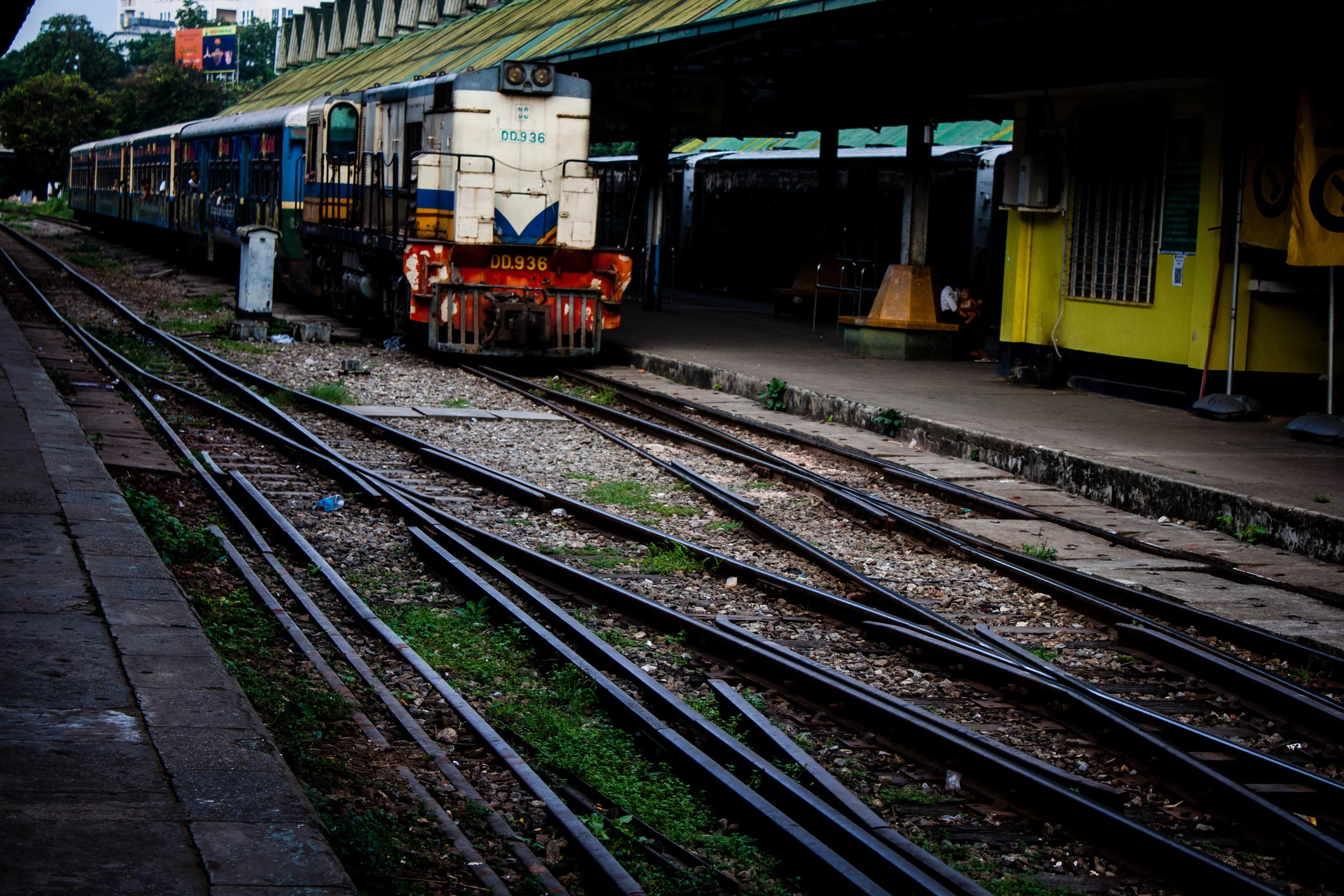Long train running

Yangon’s circular train will set you back a whole 200 Kyat – that is, roughly 20 cents.
The train, which looks like it’s come straight out of Burma’s colonial past literally chugs into the station bringing with it a plume of smoke. Passengers lunge from the platform onto the steep carriage, heaving their wares with them and settle in on the hard blue plastic chairs. I take a seat alongside them and try to make myself comfortable for the long trip ahead.
I strategically choose to sit below a rusted wire fan. It moves side to side slowly but doesn’t really seem to make a difference in the thick humidity. As the train slowly pulls away from the station, wind gushes in providing the only relief for the three hour round trip journey from the city, to rural Yangon and it’s patchwork of rice paddies and informal settlements and back into the bustling centre.
The train is slow. Slow in general, but moving at a snail’s pace to begin with. Eventually we pick up speed and suddenly it’s rice fields for days.
The 20 Kyat ticket gives you a glimpse into the daily life of the locals as they make their way to work or market. Passengers hop one and off. An elderly Buddhist nun with a salt and pepper shaved head takes a seat next to me. She’s wearing a soft pink robe. She pulls out an old transistor radio which blares out what I presume is the Burmese equivalent of talk back radio.
She asks me something in Burmese. I smile and shake my head trying to show I unfortunately do not understand. Unfazed, she continues to engage me in conversation. Eventually she gives up and focuses her attention on the little girl sitting on my other side. She passes her biscuits through me while smiling and holding the transistor to her ear. She says something in agreement to the conversation that’s happening on the radio in between bites of the biscuit. She then falls asleep on my shoulder, biscuit in hand.
At our next stop, farmers pour in with giant bundles of spring onion and coriander, sending their fragrant aromas across the carriage. One farmer carries a bucket full of bananas in his hands and one full of apples perfectly balanced on top of his head. Most get off at the next stop where other farmers and their produce are lined on the station’s platform – perhaps in preparation to move to a nearby market or to sell right there.
I take a look around at the new passengers on the train. The women all look glorious in their Thanaka – a paste made from ground bark which covers the face to protect the skin and keep them cool. It varies from a light uneven application to perfectly concentric circles on each cheek to a generous covering across the entire face. The women also wear their tradition longhis. Each have a unique pattern according to their ethnicity and region. There are such an array of vibrant colours and intricate patterns, that I’m yet to see anyone have the same outfit.
Next, the vendors start to arrive and begin their sales pitch. They walk up and down the carriage hawking their goods and carrying plates with mountains of food, selling everything from nashi pears to local fried delicacies, quail eggs and a number of things I’m just not quite sure of.
I look out the window and see the fields passing by me and doodle in my notebook and write down a few of my observations . I can feel I’m being watched. We’re nearing the end of the ride and while the train is almost empty, everyone that is still aboard has decided to sit next to or near me and are curiously looking as I write in my strange hand writing (which should be noted, most English speaking people would find strange with my horrible penmanship).
By now, I am almost reaching three hours on the train, but there hasn’t been one point during the journey where I’ve needed to look at my watch to see how much longer I have to go. I haven’t had to pull out my book or headphones for the emergency entertainment that I thought I might need to pass the time. I have no where to be. No emails. Nothing to worry about. It has been an incredibly busy week, as it always is when I work abroad, and there’s more to come in the following week as I continue travelling. This gave me all the more reason to just simply be and take in the beautiful surroundings and experience
As I pull up to the central train station back in Yangon, I looked around to check I’m in the right spot. One of my greatest fears is getting off at the wrong train station, even when I’m in Australia, at stations I regularly frequent. One of the ladies who was watching me doodle tells me I’m in the right spot. Even though she is probably in her 50s, she gives me her hand to help me down to the platform. Before shaking my hand, she asks me what I am doing here and if I like her country. I tell her very much so.







